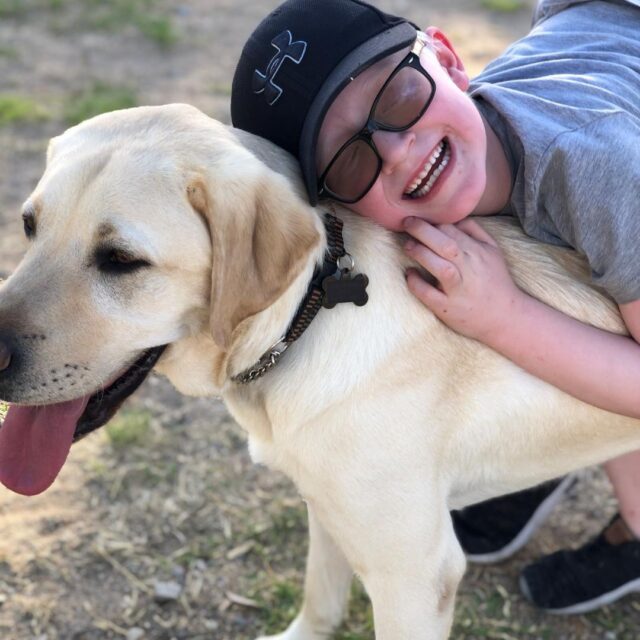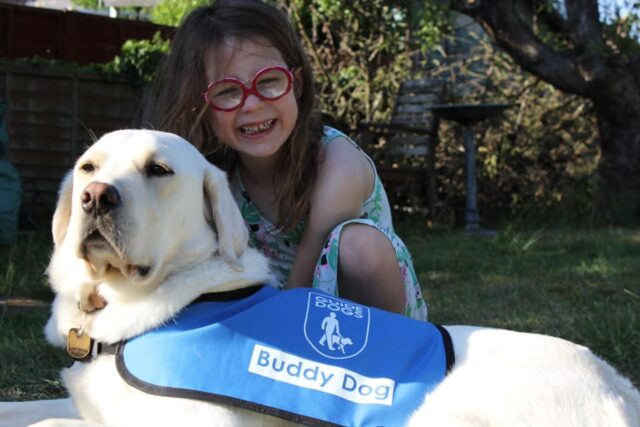Becoming a guide dog for a visually impaired human is one of the most important tasks a pooch can take on. For this reason, the training is rigorous, and not all pups who enter the program make it to graduation.
But that doesn’t mean these dogs can’t put their training to good use! In the case of Buddy Dogs, some tiny flaw in their health or behavior prevents them from becoming seeing-eye dogs. So they work with children instead.

What Is A Buddy Dog?
Only half of the dogs that begin seeing eye dog training will go on to serve an adult with a visual impairment. The rest go into other, more suitable areas of service or simply become family pets.
Dogs removed from the program for minor health and behavior problems like allergies, bad joints, or anxiety may be chosen to become buddy dogs. Their job is to help children with sight loss become more physically active, develop their self-confidence, improve relationships with peers, and build a greater sense of trust.
Buddy dogs usually remain the property of the guide dog training school. Other than that, they are just like any other family dog. In addition to being your child’s best friend, they also help them learn responsibility by caring for their buddy dog’s needs.

What Is The Difference Between A Buddy Dog & A Guide Dog?
Unlike guide dogs, buddy dogs are not considered service animals under the Americans with Disabilities Act. This means they are not legally permitted to accompany your child to school or into public restaurants and shops.
While guide dogs are trained to provide mobility aid and sighted assistance to their adult handlers, buddy dogs do not perform these tasks. In fact, they should never be under the child’s control in public. An adult must always hold onto the lead.
Despite these limitations, buddy dog programs in the US and UK are making positive changes in the lives of children with visual impairments. Parents note that their kids are more outgoing in social situations and eager to participate in family outings.

Grace & Molly’s Story
Six-year-old Grace was born with Leber Congenital Amaurosis, a condition that left her blind from birth. She was often shy and hesitant to spend time outdoors before her buddy dog Molly came along. But now Grace is enjoying a whole new world of mud, sand, and fresh air! Grace’s mother, Amanda, told Guide Dogs UK:
“Molly has opened up a whole world outside for Grace that she never had before. Before Molly, she was reluctant to go out. Grace now loves the beach and Molly is there by her side, even if she doesn’t like to get her paws wet! Even when we’re out for a walk in the community, more people stop to chat and are interested to know how Molly helps.”
“I really love having Molly. She helps me to have lots of fun and I am always laughing when I’m with Molly, like when she is rolling around in mud!” Grace added.

Many, if not all, of the children who grow up with buddy dogs will rely on certified guide dogs as adults. The mutual love, trust, and respect they learn through the K9 buddy program will help ensure their future success.
If you would like to learn more about buddy dogs and how they improve the lives of kids with vision loss, visit Guide Dogs UK and Guide Dogs for the Blind.
And be sure to check out Rubin and his buddy dog, Vesper’s story here!
Featured Image via Instagram @GDB_Official
 Toledo, United States.
Toledo, United States.